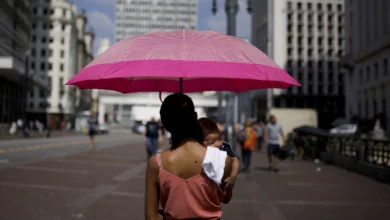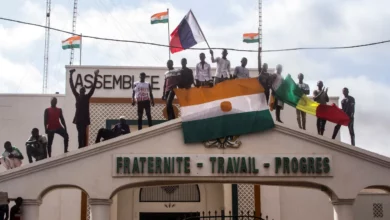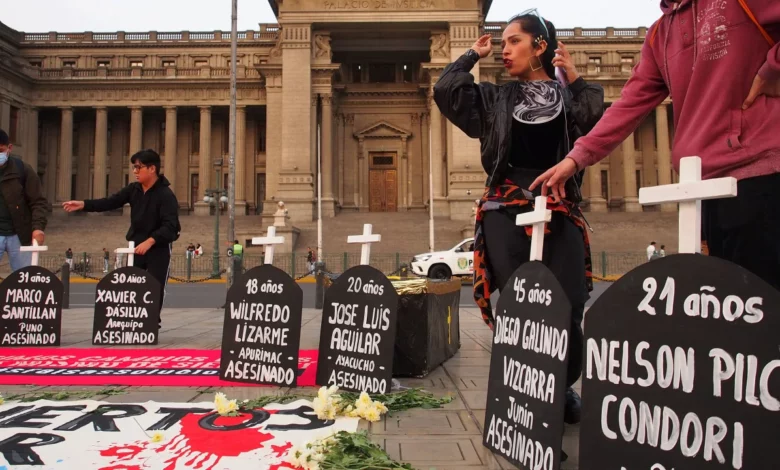
While stuck in the rush-hour traffic, a taxi driver told CNN that he will continue to work and brave the protesters’ expected blockades on Wednesday because he needs the money.
“Food is getting very expensive these days,” Alex Mendoza said, adding that he only makes $30 a day, which is barely enough to cover his daily costs, let alone the fines he risks incurring for being one of the many unlicensed taxi drivers in Lima.
Previous protests – which began in December following the ousting of Peru’s former President Pedro Castillo and ended around March – ground some parts of the country to a halt and saw human rights groups accuse security forces of excessive abuse and extrajudicial killings in the violent clashes.
The social unrest was the worst the country had seen in two decades, leaving more than 60 people dead – many of whom were from southern Peru, where indigenous Aymara and Quechua people maintain their own languages and cultural traditions, as well as a sense of separation from people in urban areas of coastal Peru, particularly Lima.
Yet many of the protesters’ key demands, such as the resignation of President Dina Boluarte, early elections, and the closure of Congress, remain unanswered.
As the political elite and protesters remained at an impasse, the months-long demonstrations cost the country tens of millions in economic damage, according to government estimates. Many are worried about how this third round of nationwide discontent will affect their bottom lines.
It is why Mendoza is torn on where he stands. “Here in Lima, we live from day to day, if protests start again, we would not be able to work to provide for our family,” he said.
“Still, they (protesters) do have the right to march – there is a lot of discontent.”
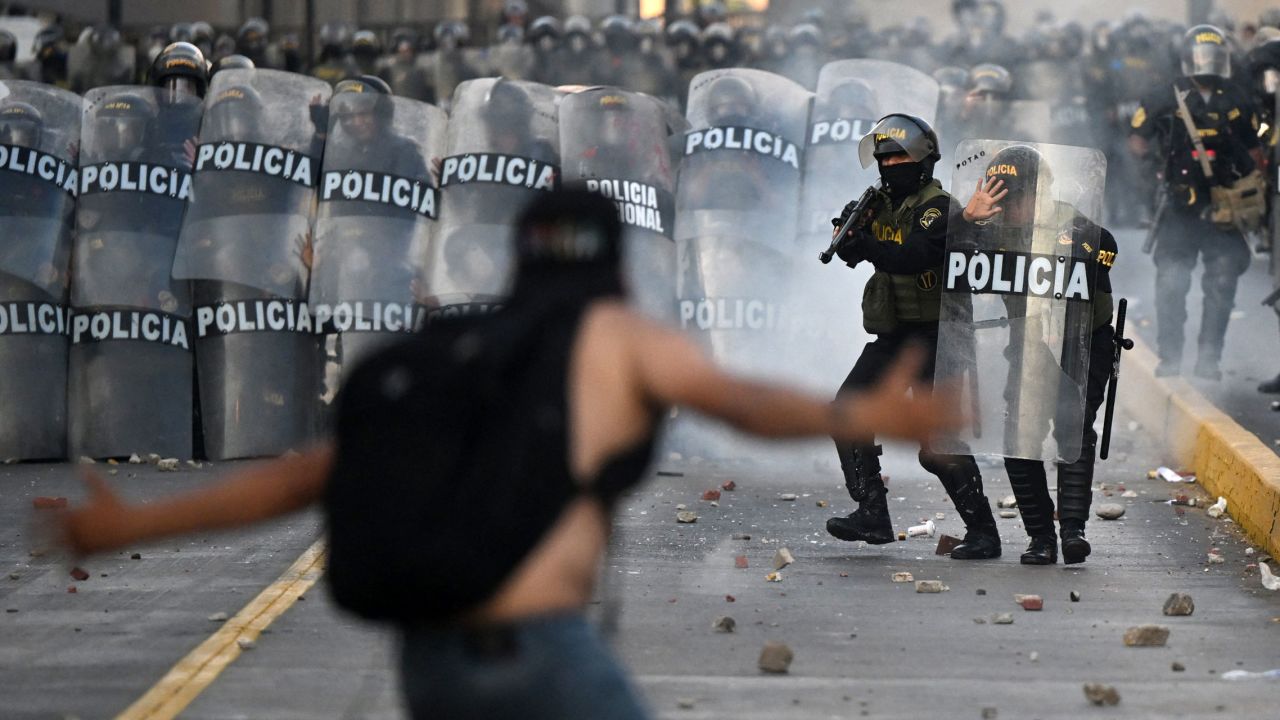
‘Cloak of impunity’
After Castillo was ousted in December and Boluarte took office, the new president promised to move the election forward to April 2024. But Congress has voted against the prospect of new elections up to five times, according to Peru’s official gazette, and in June, Boluarte buried the idea by saying that the case for a new poll before 2026 was “closed.”
Peru’s ombudsman previously announced an investigation into the protest deaths, which included a police officer. But there has been a lack of new developments in the probe, enraging many Peruvians, say critics.
Anger over accountability is what’s driving the new protests, Omar Coronel, a sociologist from the Pontifical Catholic University of Peru, told CNN. At the minimum, a democracy leads to “some kind of political sanction” for protest deaths. “We currently have none of that. There has been absolute impunity,” he said.
Marisol Perez Tello, a former justice minister, said the government is trying to ignore the dozens of dead and injured protesters. By not “investigating, prosecuting, punishing and making reparations, if appropriate,” the state is generating a “cloak of impunity around the protests and assuming a political cost that seriously undermines its legitimacy,” she told CNN.
CNN has reached out to Boluarte’s office and Peru’s ombudsman for comment.
In downtown Lima, Ivette, who declined to have her last name published, told CNN that even if she is undecided on where she stands on the protests, “there have been many murders (during the protests) and I think it is valid to complain about that.”
“I don’t know which side to be on because I also feel sorry for them, but I don’t want the city to be paralyzed,” Ivette explained.
Many agendas
Questions are being raised on whether security forces will crack down on protesters once again.
Peruvian authorities are taking no chances on Wednesday. At least 24,000 police officers are being mobilized to watch what has been dubbed the “takeover of Lima” protest.
“At this moment, we have 24,000 police prepared, trained with the equipment,” Interior Minister Vicente Romero told local media RPP Noticias. He added that the police were being deployed to provide peace and security to “those who protest, those who exercise their free expression, and those who want to work freely.”
While there is a clear legal framework for the police to use force, Perez Tello, also a professor of the armed forces in Peru, said the issue is that there are not enough non-lethal weapons at the police’s disposal.
“You must have other tools before (you) exercise the use of lethal force. The previous step is the use of non-lethal force, but for that, you need to have a properly implemented police force, but we have not yet reached an optimal level,” Perez Tello said.
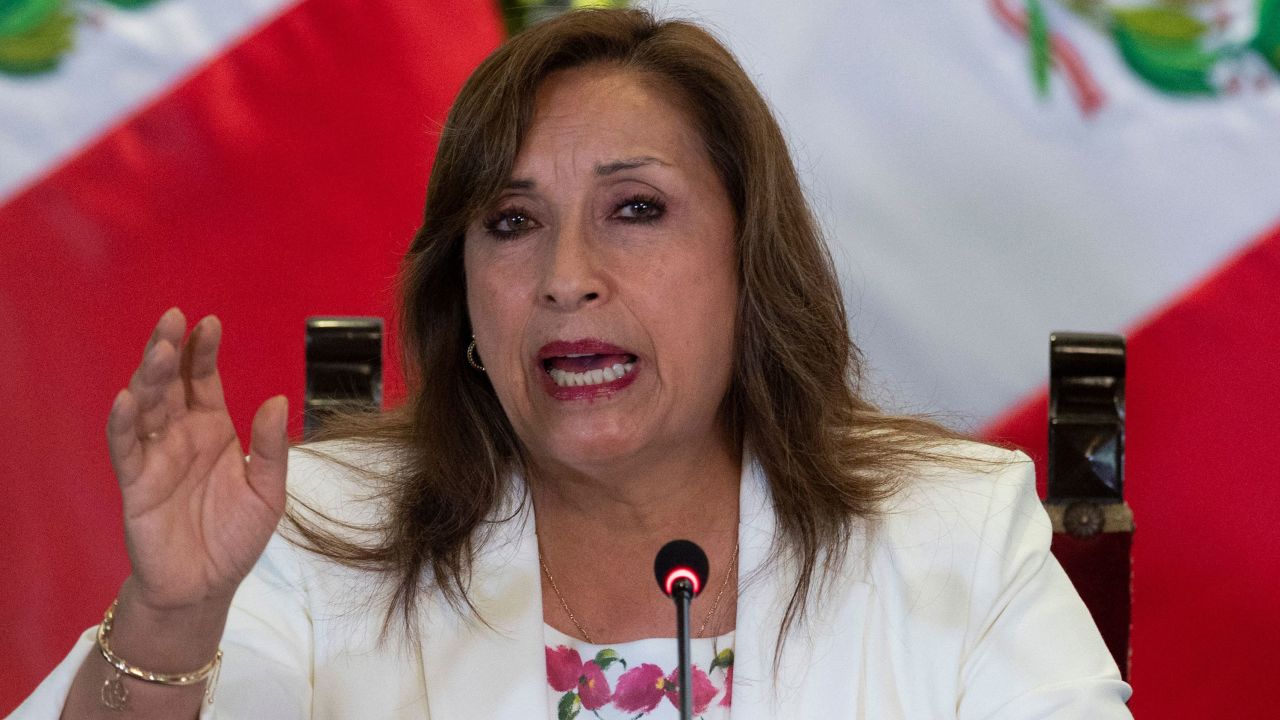
Others have faith that the response to protesters won’t be as violent. “The government has already learned of the negative impact that these deaths had internationally as well as within the country,” Augusto Álvarez Rodrich, a Peruvian economist and journalist, told CNN.
The protest comes as Boluarte’s popularity remains extremely low – she has a 77% disapproval rating, according to an IPSOS poll from June.
Her ousting and sanctions on those alleged to have abused the human rights of protesters appear to be the common agenda among the disparate left-wing groups and unions calling for this week’s nationwide protest, Coronel said.
The groups – which include collectives, university students, and ‘Ronderos’ (rural self-defense organizations)– have expanded their list of demands. It includes the release of Castillo (who has been in pre-trial detention since December), the rejection of privatization, the freedom of political prisoners, the defense of natural resources, and the departure of US troops – who came in during the early 2000’s to help train the armed forces.
The growing demands have led to some disagreements. “The issue of the protest agendas generates a certain amount of tension. There are sectors that say: ‘I would protest for new elections and condemn the violators of human rights, but I don’t want to join the protest with whoever is marching for the release of Castillo,’” Coronel said.
‘People want to work’
Lima residents are apprehensive about what this round of protests will do to Peru’s economy, which contracted 0.43% in the first trimester of 2023 due to the previous protests and a cyclone, the government’s statistical agency, INE, said in May.
“People are tired of protests. What people want is to work and that the businesses and the economy not to come to a standstill,” political analyst Álvarez Rodrich said.
In a July statement, Lima’s Chamber of Commerce said Peru could not afford new protests “even more so at a time when we need to be united to reactivate our economy and face the ravages of the El Niño phenomenon that will affect the country with heavy rains to the north and severe droughts to the south.”
Jacinto Amansio López Delgado, who owns a restaurant in Lima’s historic center, said the previous protests blocked the surrounding area and severely affected his business, which ended up working at only 40% capacity.
“We lost a lot of money during the protests, here there are more than 20 workers, so those situations affect their families as well,” López said.
As an informal worker, taxi driver Mendoza also cannot afford for the social unrest to affect his income.
But without political change, the anger will persist over Peru’s toxic and embittered political landscape, he said, adding: “There will always be dissatisfied people unless there is a president who truly wants to solve Peru’s problems.


